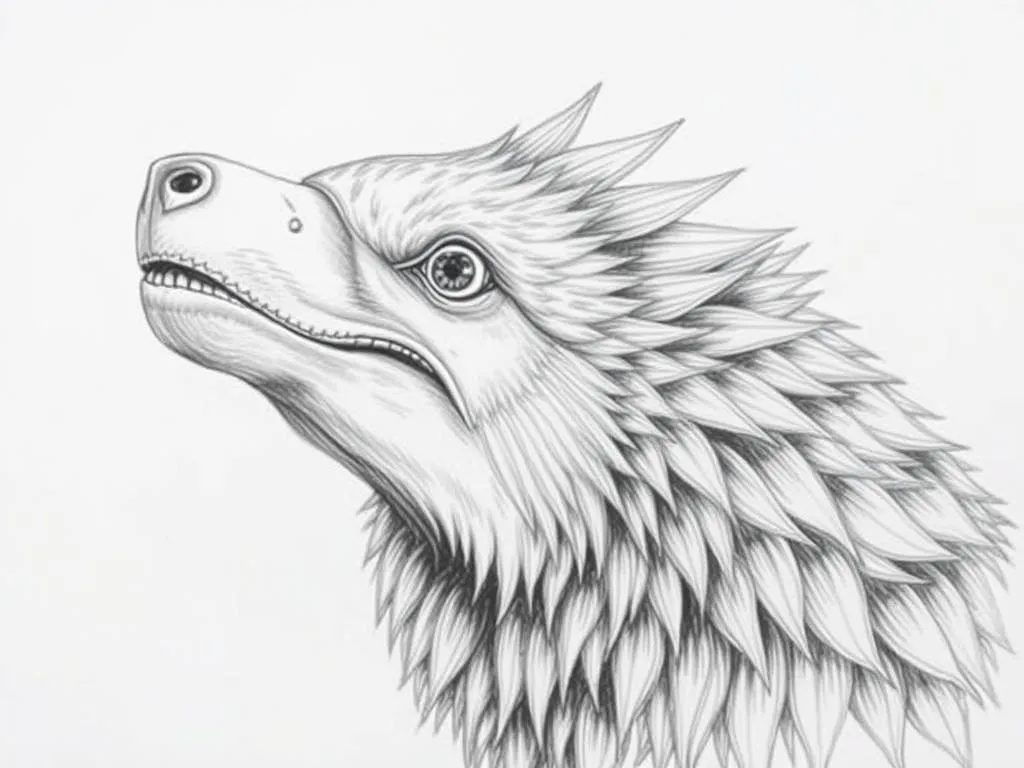The Chinook: Symbolism and Spiritual Significance

Disclaimer: Some images on this website are AI-generated artworks and may not accurately represent real animals.
The Chinook is not just a remarkable species of fish; it embodies a wealth of symbolism and meaning that resonates deeply with various cultures and individuals. This article delves into the physical attributes, behaviors, and spiritual significance of the Chinook, exploring its role as a powerful symbol of strength, resilience, and harmony with nature.
Understanding the Chinook
Physical Characteristics
The Chinook, also known as the king salmon, is a striking creature known for its impressive size and vibrant coloration. Below is a table summarizing its key physical attributes:
| Feature | Description |
|---|---|
| Size | Up to 58 inches long, weighing up to 130 pounds |
| Coloration | Blue-green back, silvery sides, and a pale belly |
| Unique Features | Distinctive spots on its back and upper lobe of the tail |
| Lifespan | Typically 3 to 7 years, with some living up to 9 years |
Chinooks are widely recognized for their robust bodies and the striking contrast between their dorsal and ventral coloring. This physical prowess contributes to their reputation as a symbol of strength.
Habitat and Distribution
Chinook salmon are predominantly found in the Pacific Ocean, primarily along the coasts of North America. Their natural habitats include:
- Rivers and streams where they spawn
- Coastal areas where they migrate and feed
- Oceanic waters, particularly in the Bering Sea and Gulf of Alaska
Their journey from freshwater to saltwater and back again for spawning showcases their adaptability and determination, further reinforcing their symbolic association with resilience.
Behavior and Social Structure
Chinooks exhibit fascinating behaviors that reflect their social structure and interactions. They are known for:
- Social Interactions: Chinooks often form schools during feeding, which helps them evade predators and enhances their chances of survival.
- Feeding Habits: As opportunistic feeders, they consume a varied diet, including smaller fish, squid, and crustaceans.
- Migration Patterns: Their remarkable migrations from rivers to the ocean and back for spawning are emblematic of their endurance and commitment to life cycles.
These behaviors not only highlight their physical capabilities but also their deep connection to community and survival, contributing to the rich tapestry of Chinook symbolism.

Symbolism & Spiritual Meaning
The Chinook embodies various themes that resonate on a spiritual level, including strength, nurturing, and connection to nature.
Strength and Resilience
The journey of the Chinook is one marked by challenges, from navigating treacherous waters to overcoming barriers during their spawning migrations. This struggle is a powerful representation of endurance in the face of challenges.
Many cultures view the Chinook as a potent symbol of resilience, inspiring individuals to persevere through life’s difficulties. The ability of these fish to thrive in both freshwater and saltwater environments serves as a reminder that strength can be found in adaptability.
Nurturing and Family Bonds
The Chinook also highlights the importance of community and familial support. These fish often return to their birthplace to spawn, demonstrating a powerful commitment to their lineage. This behavior symbolizes the nurturing aspects of family bonds and the interconnectedness of life.
In many Indigenous cultures, the Chinook represents the idea of community support and the significance of nurturing relationships. This notion encourages individuals to cherish and prioritize their family and social ties, fostering a sense of belonging and support.
Connection to Nature
At its core, the Chinook symbolizes harmony with the environment. Their life cycle is intricately tied to the health of aquatic ecosystems, and their presence reflects the balance within nature.
By embodying this connection, the Chinook serves as a reminder of the importance of respecting and preserving the natural world. They inspire individuals to seek harmony with their surroundings and recognize their role within the broader ecological system.
Chinook in Dreams
Dreams involving the Chinook can carry profound meanings and insights. Understanding these messages can offer valuable personal reflections and guidance.
Common Dream Scenarios
Encounters with Chinooks in dreams often manifest in various scenarios. Here are a few common themes:
| Dream Scenario | Possible Interpretation |
|---|---|
| Swimming with Chinooks | Embracing strength and resilience |
| Observing Chinooks spawning | Nurturing family connections |
| Struggling against the current | Facing life challenges head-on |
| Catching a Chinook | Achieving personal goals or ambitions |
Each of these scenarios provides a unique lens through which to explore one’s emotions, challenges, and aspirations, emphasizing the multifaceted nature of Chinook symbolism.
Messages and Insights
When dreaming of Chinooks, individuals may receive messages that encourage introspection. These dreams can signify:
- Endurance: A reminder to keep pushing through adversity.
- Nurturing: An invitation to strengthen family ties and support systems.
- Balance: A call to reconnect with nature and find equilibrium in life.
By interpreting these messages, individuals can gain deeper insights into their personal journeys and the challenges they face.
Personal Reflection
Encouraging readers to explore their own feelings and experiences related to Chinooks can foster personal growth. Reflecting on dreams involving these powerful fish may reveal underlying emotions or unresolved issues.
Consider journaling about your dreams and how they relate to your life experiences. This practice can lead to a greater understanding of the symbolism the Chinook holds for you personally.
Modern Interpretations
The Chinook continues to hold significant meaning in contemporary society, influencing cultural narratives and personal beliefs.
Cultural Significance
In Indigenous cultures, the Chinook is revered not only as a vital food source but also as a symbol of life and sustenance. Their presence in traditional stories and ceremonies emphasizes their importance in maintaining cultural heritage.
Today, awareness of the Chinook’s ecological role and the challenges it faces due to climate change and overfishing has sparked conservation efforts. This emphasis on sustainability reflects a growing recognition of the need to protect natural resources and the interconnectedness of all living beings.
Chinook in Art and Literature
The Chinook has inspired countless works of art and literature, serving as a powerful symbol in various forms of media. Artists and writers often depict the Chinook as a representation of strength, resilience, and connection to nature.
From paintings that capture their majestic form to folklore that celebrates their journey, the Chinook’s symbolism permeates creative expressions, encouraging audiences to reflect on the broader themes of life, endurance, and community.
Chinook as a Spirit Animal
For many, the Chinook serves as a spirit animal, embodying qualities that individuals aspire to cultivate in their lives. Connecting with Chinook energy can be achieved through:
- Meditation: Visualizing the Chinook during meditation can help invoke its strength and resilience.
- Nature Walks: Spending time in natural settings, particularly near bodies of water, can facilitate a deeper connection to the Chinook’s spirit.
- Journaling: Reflecting on personal experiences and challenges while considering the Chinook’s symbolic meaning can foster growth and understanding.
By embracing the Chinook as a spirit animal, individuals can invite its qualities into their daily lives, enhancing their resilience and sense of community.
Key Takeaways
Reflecting on the symbolism of the Chinook reveals several essential themes:
- Strength and Resilience: The Chinook exemplifies the power of perseverance in overcoming obstacles.
- Nurturing and Family Bonds: It reminds us of the significance of community and familial support.
- Connection to Nature: The Chinook symbolizes harmony with the environment and the importance of ecological balance.
By understanding these themes, individuals can enrich their personal journeys and strengthen their connections to the natural world.
Conclusion
The enduring significance of Chinook symbolism is evident in both ancient traditions and contemporary beliefs. As a powerful representation of strength, family, and nature, the Chinook continues to inspire and guide individuals in their personal and spiritual journeys.
Exploring the multifaceted meanings of the Chinook invites deeper reflection on our connections to ourselves, our communities, and the world around us. The Chinook serves as a timeless reminder of the resilience inherent in all living beings and the importance of nurturing our bonds with nature and each other.







